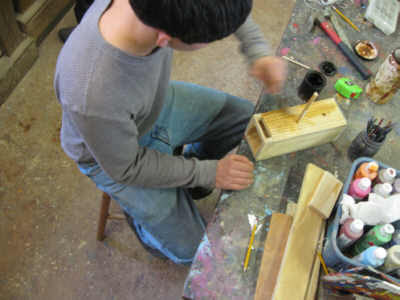About two years ago I began carving faces, flowers, and bugs on the scrap pieces of wood that I cut off my walking sticks. For years I looked at those nice pieces of wood... some sourwood, rhododendron, or perhaps dogwood and just didn't feel right about tossing them out or into the wood heater. Even though they had been cast as walking stick rejects, for some reason I just loved these little pieces of finely cured wood so I gradually ended up with a fine reserve of the best pieces.
I might have already posted one of the greenmen here as seen in the picture above and now I'm back at it again! These little pieces of wood are just too beautiful and most of all they are just too easy to pick up and put into my cargo pockets when I'm leaving the house. During the day I can then work on them whenever I can find a minute or two.
These little "on the go" carvings are mostly unplanned so I use complete "on the spot" creative freedom in their woody creation. As seen in the other pictures I just finished another scrap wood face this week, just working on him when I could. He is made from a piece of rhododendron that is about 6" long and 1-1/2" diameter which is my ideal walking stick thickness.
While this particular little face is quite simple I was influenced from several references while carving it. Most of all I had just watched the movie Avatar the day before I began carving so that's probably where the look of something from The Planet of The Apes crossed with Star Trek's "Spock" came in. I even added some lavender skin tone to the final finish but it's hard to see from a picture.
Although he's not too complex when it comes to carving, this little fellow will make a nice addition to the "family" as I decide what the next one will be.
Mitered finger joint
-
As part of my ongoing effort to finish unfinished products in my shop, I am
making a box to fit a lid crafted during the filming of my book, The
Taunton C...
3 months ago









































